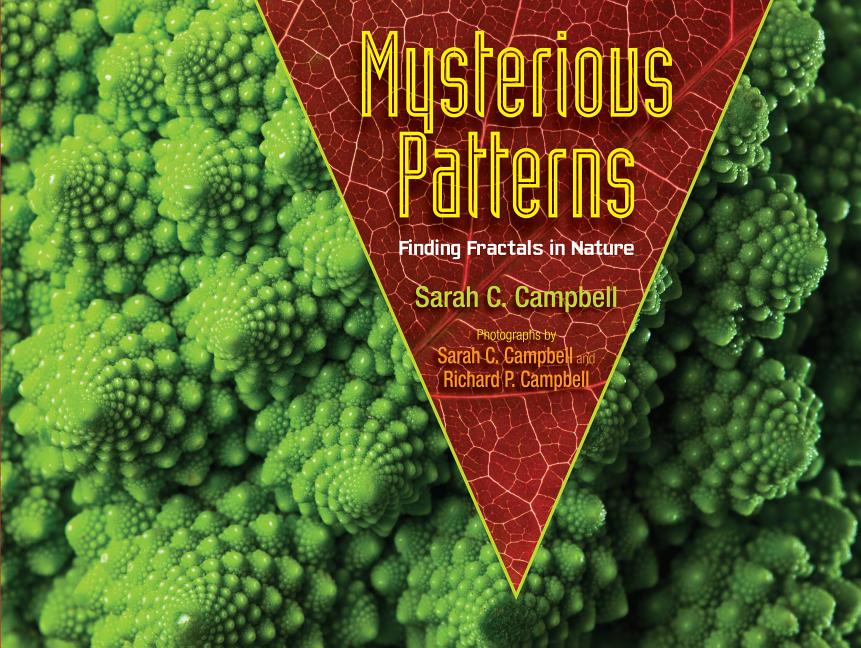Book Description
for Mysterious Patterns by Sarah C. Campbell and Richard P. Campbell
From Cooperative Children's Book Center (CCBC)
What does the shape of a tall tree have in common with the jagged reach of lightening? What do they both share with a stout stalk of broccoli or the umbrella-like head of Queen Anne’s lace? They are all fractals: shapes made up of smaller parts that look like the whole. It wasn’t until 1975 that mathematician Benoit Mandelbrot noticed this pattern in nature and named these natural shapes “fractals.” Ferns and mountain ranges, the paths of rivers and the veins and arteries in our lungs are all other examples of fractals shown in this work pairing Sarah Campbell’s lively and easy-to-follow narrative with striking photographs. An afterword tells more about Benoit Mandelbrot and discusses ways fractals have been used in human creations, both real (e.g., cell phone antennas) and imagined (“Harry Potter’s invisibility cloak would have been made of fractals”). (Ages 6–10)
CCBC Choices 2015. © Cooperative Children's Book Center, Univ. of Wisconsin - Madison, 2015. Used with permission.


